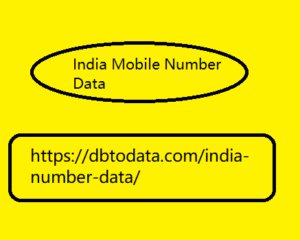Post by account_disabled on Mar 10, 2024 9:21:02 GMT
The first business groups to have addressed the issue of reorganizing work to better respond to unforeseen circumstances and sudden market changes were software developers. For years they had followed a waterfall development methodology, characterized by precise planning of objectives and specifications before starting work, by a rigid succession of long development phases (each phase begins only at the end of the previous), from tests and feedback possible only upon completion of the work. Today, most IT teams have adopted "agile" development practices, following methodologies such as Kanban and Scrum, characterized by work flexibility, transparency and alignment between workers, continuous deliveries, a limited number of tasks and well-calculated work times.
The Agile process in marketing This way of working began to be applied to marketing only India Mobile Number Data a few years ago, although its theorization dates back to the Agile Marketing Manifesto of 2012. Among the ideas borrowed from software development is that of adopting short and continuous release cycles, structured by circular phases. It all starts with the creation of a list of tasks, ordered by priority, which represent the activities to be carried out. The “Sprint Planning” meeting is necessary to examine the priority tasks, estimate the time required and decide which will be completed in the sprint. The activities are not assigned by the manager to the work teams, but the individual members take responsibility for themselves, choosing the tasks that they think they are able to complete in the expected time. The meeting can have variable durations, but not more than two hours.

The sprint is the period of work necessary to carry out the activities that have been planned. Every day the teams usually meet at the same time for a "stand up meeting". The name derives from the way of standing for the short duration of the match (about 15 minutes). Each member is encouraged to answer three questions, useful for aligning all the others, in a constructive spirit and of maximum transparency: what did I do yesterday? What will I do today? Are there obstacles that may prevent you from completing the intended work? Any complex issues are not addressed here, but assigned to someone for later resolution. Once the work is completed, the "Sprint Review" is organized which focuses on what has been done, the materials produced are checked and the results are evaluated. For example, the assets created for a social media campaign, made up of photos, videos, copy, landing pages.
The Agile process in marketing This way of working began to be applied to marketing only India Mobile Number Data a few years ago, although its theorization dates back to the Agile Marketing Manifesto of 2012. Among the ideas borrowed from software development is that of adopting short and continuous release cycles, structured by circular phases. It all starts with the creation of a list of tasks, ordered by priority, which represent the activities to be carried out. The “Sprint Planning” meeting is necessary to examine the priority tasks, estimate the time required and decide which will be completed in the sprint. The activities are not assigned by the manager to the work teams, but the individual members take responsibility for themselves, choosing the tasks that they think they are able to complete in the expected time. The meeting can have variable durations, but not more than two hours.

The sprint is the period of work necessary to carry out the activities that have been planned. Every day the teams usually meet at the same time for a "stand up meeting". The name derives from the way of standing for the short duration of the match (about 15 minutes). Each member is encouraged to answer three questions, useful for aligning all the others, in a constructive spirit and of maximum transparency: what did I do yesterday? What will I do today? Are there obstacles that may prevent you from completing the intended work? Any complex issues are not addressed here, but assigned to someone for later resolution. Once the work is completed, the "Sprint Review" is organized which focuses on what has been done, the materials produced are checked and the results are evaluated. For example, the assets created for a social media campaign, made up of photos, videos, copy, landing pages.


